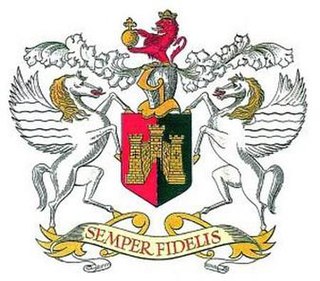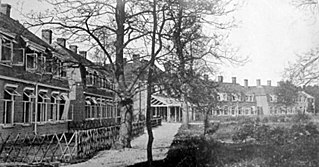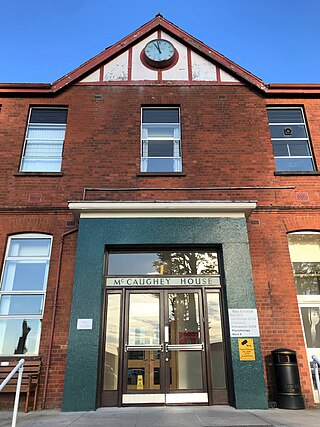
Heavitree is a historic village and parish situated formerly outside the walls of the City of Exeter in Devon, England, and is today an eastern district of that city. It was formerly the first significant village outside the city on the road to London. It was the birthplace of Thomas Bodley, and Richard Hooker, and from the 16th century to 1818 was a site for executions within what is now the car park of the St Luke's Campus of the University of Exeter.

Exeter is a constituency composed of the cathedral city and county town of Devon represented in the House of Commons of the UK Parliament. The constituency has had a history of representatives from 1900 of Conservative, Liberal Party, Independent and Labour representation.
Local elections in Devon are held every four years in order to vote for councillors on Devon County Council. There are a total of 62 councillors on the council. Since 1998, Plymouth and Torbay have been unitary authorities, making them independent of Devon County Council.

Poltimore House is an 18th-century country house in Poltimore, Devon, England. The Manor of Poltimore was from the 13th to the 20th century the seat of the Bampfylde family, which acquired the title Baron Poltimore in 1831. The house retains much of the fabric of earlier buildings on the site erected by the family. It is designated a Grade II* listed building.

Pinhoe is a former village, manor and ecclesiastical parish, now a suburb on the north eastern outskirts of the City of Exeter in the English county of Devon. The 2001 census recorded a population of 6,108 people resident within Pinhoe Ward, one of 18 wards comprising the City of Exeter. The population increased to 6,454 at the 2011 Census.

The Royal Devon and Exeter Hospital, and with a main site sometimes known as Wonford Hospital, is a large teaching hospital situated in Exeter, Devon, England, and is run by the Royal Devon University Healthcare NHS Foundation Trust.

Exeter City Council is the council and local government of the city of Exeter, Devon.

Hawkmoor Hospital, originally known as Hawkmoor County Sanatorium, was a specialist hospital near Bovey Tracey in Devon, founded in 1913 as a pulmonary tuberculosis sanatorium as part of a network of such facilities, instigated by the Public Health 1912. From 1948, the hospital catered for patients with a range of chest ailments, as well as chest surgery, and mental disability patients. From 1973, the facility dealt solely with mental health problems until its closure in 1987.

Tramways in Exeter were operated between 1882 and 1931. The first horse-drawn trams were operated by the Exeter Tramway Company but in 1904 the Exeter Corporation took over. They closed the old network and replaced it with a new one powered by electricity.
The town of Colorado Springs, Colorado played an important role in the history of tuberculosis in the era before antituberculosis drugs and vaccines. Tuberculosis management before this era was difficult and often of limited effect. In the 19th century, a movement for tuberculosis treatment in hospital-like facilities called sanatoriums became prominent, especially in Europe and North America. Thus people sought tuberculosis treatment in Colorado Springs because of its dry climate and fresh mountain air. Some people stayed in boarding houses, while others sought the hospital-like facilities of sanatoriums. In the 1880s and 1890s, it is estimated that one-third of the people living in Colorado Springs had tuberculosis. The number of sanatoriums and hospitals increased into the twentieth century. During World War II, medicines were developed that successfully treated tuberculosis and by the late 1940s specialized tuberculosis treatment facilities were no longer needed.

The Pinewood Hospital was a hospital in Pinewood, near Crowthorne, England, for the treatment of people suffering from tuberculosis. It was located in a pine wood as pine trees were thought to be beneficial in the treatment of the disease. It opened as the London Open Air Sanatorium in 1901 before becoming the Pinewood Sanatorium. It treated casualties of the First and Second World Wars and after the second, began to treat general thoracic patients as tuberculosis became less prevalent. It closed in 1966.

Whiteabbey Hospital is a hospital located close to the village of Whiteabbey, within the town of Newtownabbey, Northern Ireland. The hospital first opened in 1907 as The Abbey Sanitorium, centred around a country house known as 'The Abbey'. The house has stood on the site from 1850, and was once the residence of prominent architect Charles Lanyon. The hospital was extended and several buildings added throughout the early 20th century, and it was renamed Whiteabbey Hospital in 1947. The hospital is managed by the Northern Health and Social Care Trust. Many healthcare services have been withdrawn from the hospital, most recently with the closure of the Minor Injuries Unit in 2014.
The Hawley Hospital was a specialist hospital in Barnstaple, Devon, founded in 1920 as a pulmonary tuberculosis sanatorium as part of a network of such facilities, instigated by the Public Health 1912.

The Heavitree Hospital is a hospital currently operated by the Royal Devon University Healthcare NHS Foundation Trust, as a satellite site of the Royal Devon and Exeter Hospital with its main site a short distance away at Wonford. The hospital started as the Exeter Workhouse, and was also known as the Exeter City Hospital.
Whipton Hospital is a small community hospital, also known as the Exeter Community Hospital (Whipton). It was founded as the Whipton Isolation Hospital in 1913 as a pulmonary tuberculosis sanatorium as part of a network of such facilities, instigated by the Public Health 1912.

The Honeylands, originally the Honeylands Children's Sanatorium and later the Honeylands Children's Centre was a hospital in Exeter, Devon used as a children's pulmonary tuberculosis sanatorium, later used for treatment of children with learning difficulties. Adults were treated at the nearby Whipton Hospital.
Whipton Barton was an estate farm to the East of Exeter. The 'Barton' suffix is the traditional Devon wording for the manor house, and indicates a demesne in the feudal system.














